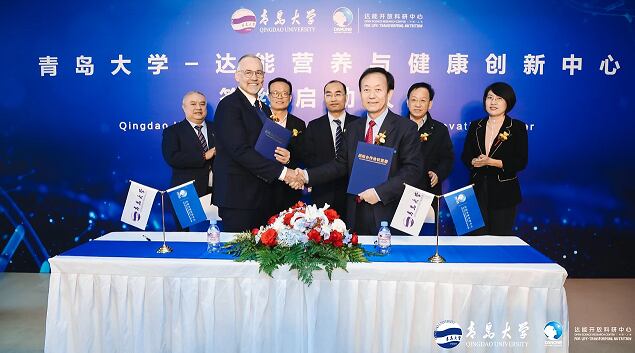This is also why companies specialising in infant formula products also tend to be market players in the adult and elderly milk formula categories.
Examples include Yili which has developed a range of formula products under the brand Xin Huo (欣活) as well as Danone China’s low glycemic index (GI) milk powder launched under the Ganmai brand last year.
Speaking to NutraIngredients-Asia, Kevin Hou, product manager at Glanbia Nutritionals – which supplies dairy functional ingredients, analysed the recent trends and evolution in China’s healthy ageing market, specifically in the area of formula milk products.
“There were already formula powder products relevant to healthy ageing appearing in China during the 1990s. However, these products are solely for supplementing protein.
“In the subsequent 20 to 30 years, there have been simple upgrading done. At one point, we saw upgrades such as high iron, zinc, and calcium formula milk powder.”
The next stage, he said, was the addition of pre/probiotics and fish oil into these products.
“Initially, these ingredients aren't applied to the ageing population, since it's basically about supplementing protein to address ageing problems such as sarcopenia.
“Later, companies realised that these ingredients, especially those from overseas firms, are not only useful for infants and toddlers, but also for the adults and elderly and that's how these materials are being applied to products for the elderly,” he explained.
Similarly, companies are adopting sports nutrition concepts, such as applying whey protein concentrate (WPC) and whey protein isolate (WPI) for healthy ageing products to address the issue of muscle loss among the elderly.
Based on the company's findings, sleep, sacorpenia, bone and joint, cognitive function, and cardiovascular health are the top health concerns for seniors in China.
Cost still the hurdle
Cost is still the biggest challenge in using more functional raw materials in healthy ageing products.
This is mainly because healthy ageing products had its roots as a basic multimineral and vitamin supplement product.
“To this day, we see that no matter if it's domestic or foreign brands, they have not massively produced products with stronger functional ingredients.
“I think the biggest reason is due to cost. In its early days, formula milk for the middle-aged adults and the elderly such as simple protein products which are lower in prices in general.
“The situation has changed in the past two years and product price has increased. However, the companies still find that the biggest pain point in developing new products is still the costs involved,” Hou explained.
The lack of a set of national standards or Guo Biao (GB standards) could also be another reason why nutritional products for the elderly are not yet premium.
At the moment, GB standards are put in place by the China authorities for categories such as infant formulas and Foods for Special Medical Purposes (FSMPs).
Hou explained that without the GB standards, companies would have a harder time justifying the value of their products.
“In the last 20 to 30 years, although there have been products targeted at the elderly sold in the market, but they are sold in the form of general foods.
“I think the authorities believe that this is the better way to sell the products and thus it is unlikely that they will draft a separate GB standard.
“With a GB standard in place, the standards for making the products will be higher and companies would be able to raise the prices of their products. However, without GB standards, this could be a reason why companies aren't able to sell the products at a higher price,” he said.
In response, there are companies and industry bodies which are teaming up to draft industry standards, also known as Tuan Biao (团标) for making certain nutrition products for the aged population. In this way, Hou said that products would be able to claim that they were made according to these standards and in turn, be marketed at a higher price.
The natural narrative
Amid the cost constraints, some companies are hoping to justify the higher retail price by using ingredients that consumers are familiar with but comes from a ‘more superior’ source.
“Dairy companies when developing new products will need to consider many things. Not only do the products need to have a unique selling point and have to differentiate itself from health supplements that make exaggerated health claims, as well as resolving cost pressures.
“Together, these points have heightened the difficulties of developing new products. This is the situation that we are seeing from the aged nutrition category,” Hou said.
As such, companies are going around the situation by leveraging on the ‘naturalness’ or origins of their ingredients.
An example is calcium, where companies are developing new products using milk calcium on top of their existing products which contain synthetic calcium, such as calcium carbonate or calcium nitrate – which are also cheaper.
“It’s very difficult to come up with a very good narrative using these synthetic ingredients,” Hou said.
By launching products containing either milk mineral derived or synthetic calcium, companies are able to make head-on comparisons between products and raise the selling price of product with a better narrative.
“Almost all companies are using this method,” he said.
Last year, Junlebao also launched a milk powder designed for supporting calcium absorption in middle and old-aged consumers. Similarly, this is achieved by using calcium extracted from milk, the company said.



